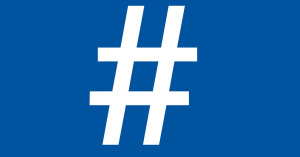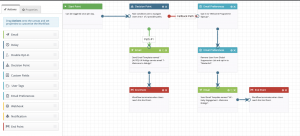
Spend any kind of time on social media and you will quickly become familiar with some of the most basic, common hashtags. Consider #tbt, #wcw, #selfie, #sorrynotsorry—all of these trendy tags represent cross-cultural idioms that immediately position a tweet, a Facebook post, or an Instagram image within a larger conversational context.
As a small business owner, you should absolutely be using these hashtags to leverage these popular trends; they’re a great way to get your content noticed and appreciated. With that said, the common nature of these hashtags is their downfall as well as their saving grace: While they can prove helpful in generating engagement, they also do little to help your brand stand out from the crowd.
That’s what makes it advantageous to develop some of your own, customized hashtags—some little taglines or catchphrases that you “own” and that speak directly to your brand. These ultimately help create a brand identity that is specific rather than generic, and they reveal the true creativity behind your content marketing efforts.
Of course it is important to be thoughtful in creating your custom hashtags. To help get your creative juices flowing, we have three dos and one don’t for custom hashtagging.
- DO add your name to your hashtags. If you want a hashtag that immediately points back to your brand, there is no better way to achieve it than by inserting your name into the hashtag. For example, Grammar Chic, Inc. has a client named Kip, and on Twitter we position some of his insights and sayings with the #tipsfromkip hashtag.
- DO be funny, where appropriate. Hashtags present a great avenue for humor, even if you’re essentially making up words or concepts. We know of one company that sells steaks and ribs, and it tags many of its posts with the clever, defiant-sounding #unvegan hashtag.
- DO offer immediate value. Sometimes the best hashtags aren’t necessarily clever; they just offer something beneficial, something readers will immediately zero in on as value-adding. We work with a home improvement company that often does hashtag series such as #Roofing101 or #RemodelingMadeSimple, and these posts tend to get a lot of shares and favorites.
- DON’’T leave your hashtags too open-ended. A final warning: Don’t leave your hashtags open to hijackers. We all know the story of McDonald’s and its ill-fated #McDStories campaign. Customers were supposed to share positive memories from McDonald’s, but instead shared tweets about getting food poisoning and the like. Make sure you maintain some level of control over your hashtags.
(255)







